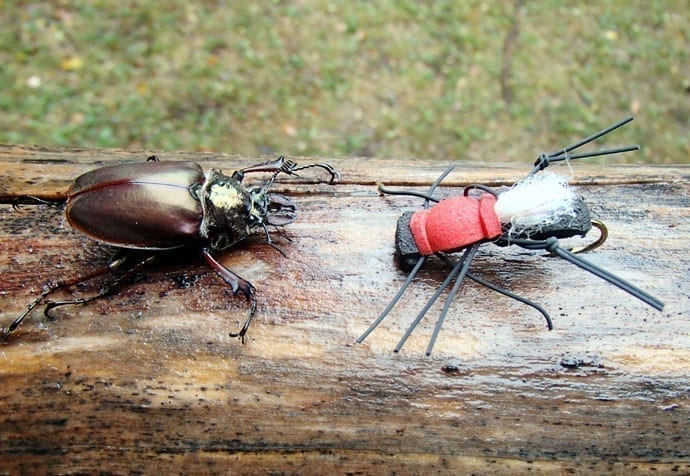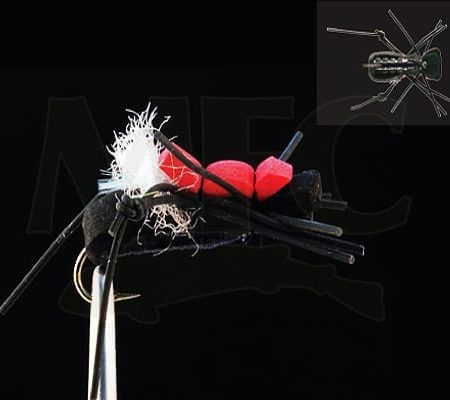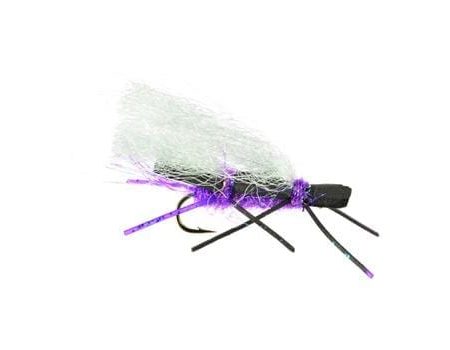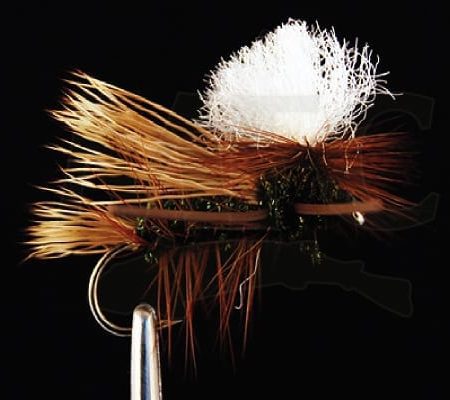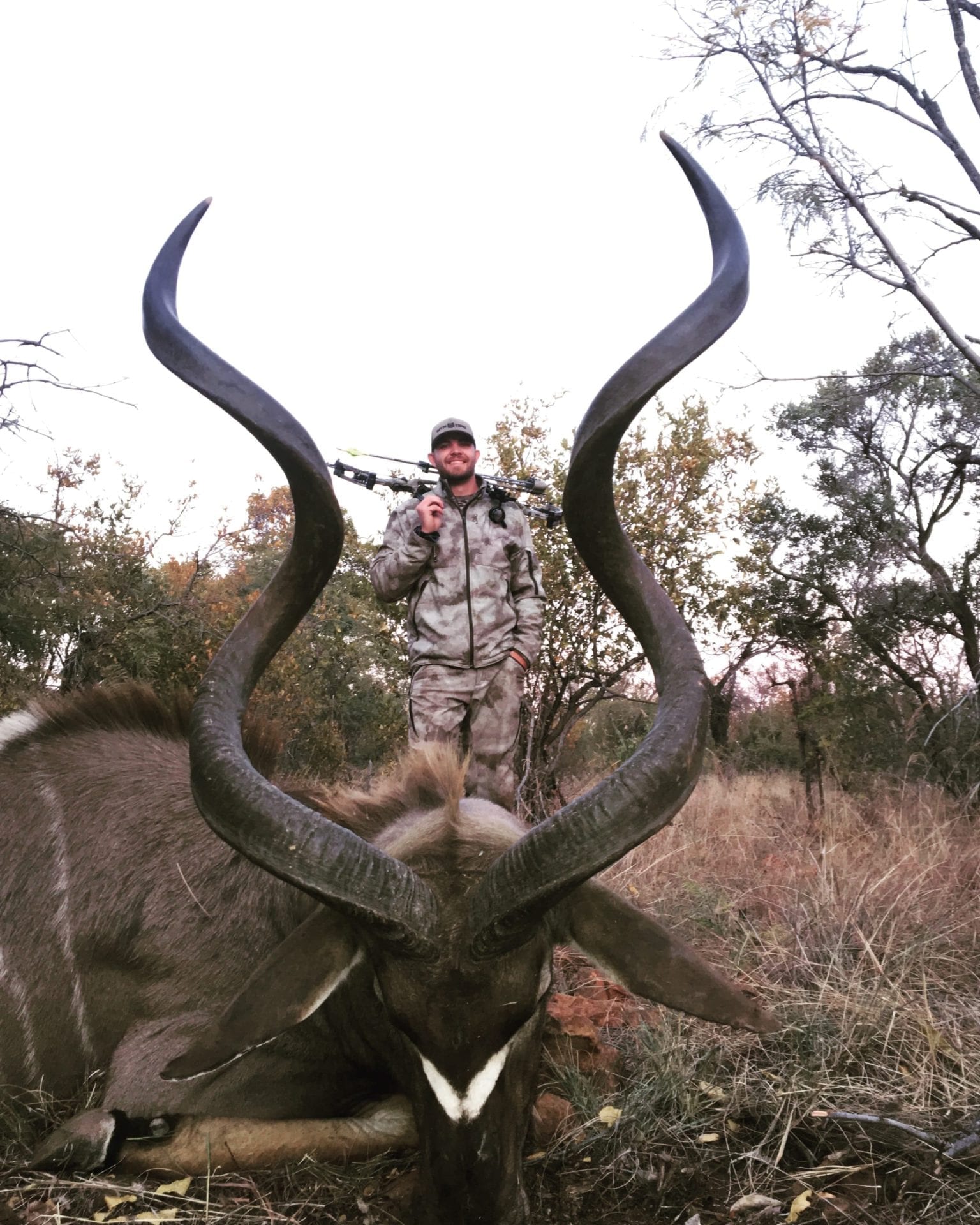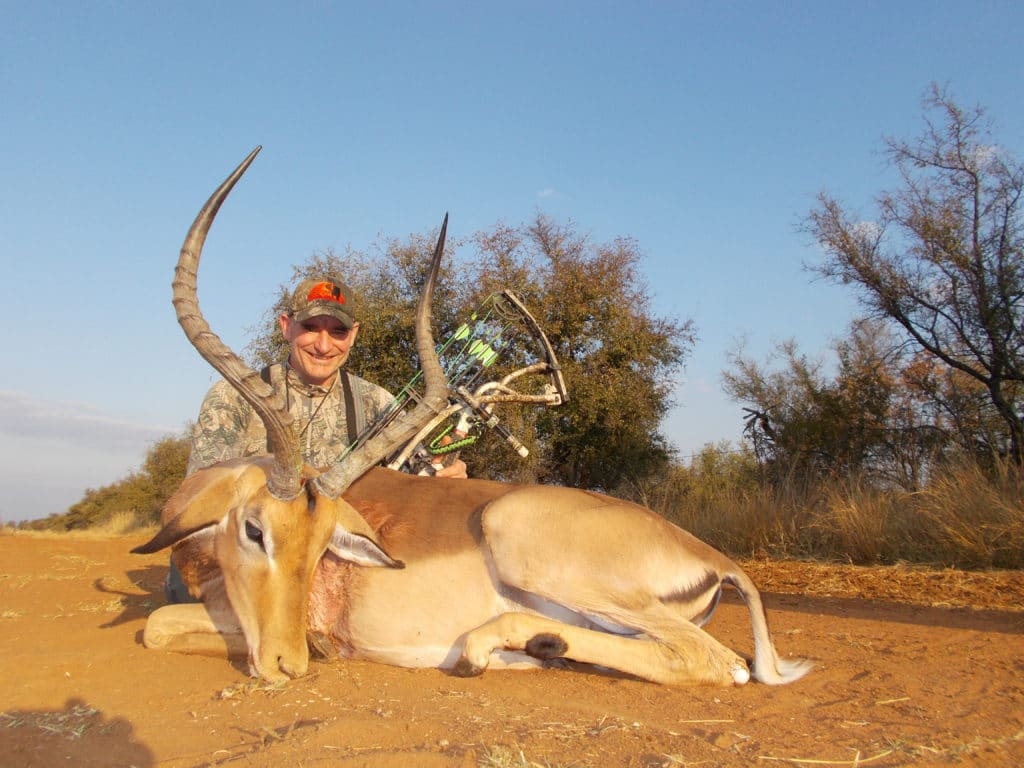One reason many anglers from around the world have fly fishing Patagonia Chile on their bucket list or make the trip year after year with a group of buddies is the ability to fish large dry flies to aggressive underfished trout. Chile offers a myriad of opportunities to cast big stoneflies, mayflies, caddis, and terrestrials at hungry trout. The star of the show and a favorite bug to imitate and fish is the Chilean Cantaria Beetle (hiasognathus grantii), a species of stag beetle also known as Darwin’s Beetle.
Other than its size, the most notable feature of the beetle has got to be the huge mandibles that the males have. The cantaria beetle is a great food source for trout during the summer months and is most prevalent in February and March. They are clumsy fliers and often end up falling into the rivers and creeks.
What flies imitate the Cantaria Beetle?
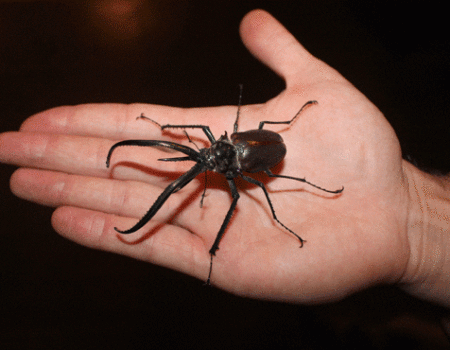
The Cantaria Beetle is a large beetle that is approximately 1.5 to 3 inches long. They start showing up in Patagonia in January and continue to be around until early April.
If I was given the option to bring one fly to Patagonia it would be a black and red Fat Albert in a size 4. You could even go bigger because some of the “naturals” will actually dwarf a size 4! The trout will absolutely crush these foam flies and tear them apart so be sure to bring extra!
I can only imagine to trout the helpless beetle looks like an unclaimed steak swirling down the river. Large brown trout and rainbow trout take the big foam dry flies with such aggression that it sometimes startles anglers. They race to eat the beetle before one of the other trout in the lie can take it.
How to Tie a Foam Beetle
Materials You’ll Need:
- Hook: 1X-long dry-fly hook (here, a Dai-Riki #300), size 14.
- Thread: Black, 6/0 or 140-denier.
- Rear Legs: Black Centipede Legs, size mini.
- Back / Head: Black Craft Foam, 1/4-inch wide.
- Underbody: Peacock herl.
- Indicator: Soft Foam Parachute Post, size medium.
- Front Legs: Black Centipede Legs, size mini.
- Adhesive: Head cement.
How to Fish the Cantaria Beetle in Patagonia
A fast action fly rod such as a 9’ 6wt paired with a short leader and heavy tippet is the ideal way to turn over your fly and hit targets while float fishing the rivers. The best way to fish the beetle is by plopping it on the water, letting it drift down river and twitching it or popping it along. You can even cast straight across the river and let it swing like you would a mouse in Alaska.
This is not typical dry fly fishing, the key here is to make some noise and disturbance on the surface to let the trout lurking below know there is a big meal above them. Often times the trout miss them but if you leave your fly or recast to the same spot they will eat again. The action can be fierce and you will love every minute of it! This is a great way to target trophy fish and you may even catch a brown of a lifetime. The cherry on top is getting to watch him eat your fly!
Live Like You Mean It
Contact Us
We've helped thousands of OI clients plan their adventures
Our team of professional consultants are ready to help you research, book and plan an amazing trip with one of our amazing outfitter partners around the world.
I didn't think an experience like this was possible.
This trip, was, for me at least not just a trip, for me it was a real adventure, a real experience. I love the wilderness and this trip afforded me the opportunity to connect with the Alaskan wilderness in ways very few people do. It was an experience I will never forgot in a place I can’t wait to get back to.Oliver Fischer
The outfitter handled everything perfectly.
We were thankful that Outdoors International hooked us up with a great outfitter because they were able to find us an acceptable alternate on short notice. Overall the two year process to get this float in was seamless and worry free. Just like it should be.Thank you, Stan Masneri
What an amazing experience!
The lodge was out of this world! Our rooms, the delicious food, the incredible wildlife and the scenery were amazing. Our photo safari guide was truly exceptional and had us on animals almost constantly. We saw over 30 different species and had some incredible up close experiences. Africa is amazing!Scott Navares
Copyright 2005-2025 © Outdoors International™ · All Rights Reserved.


